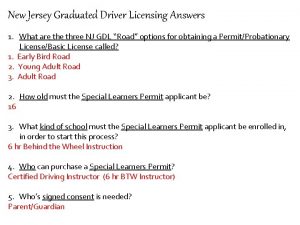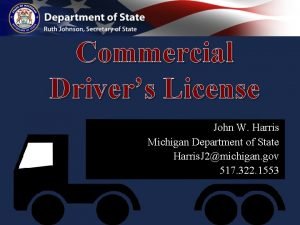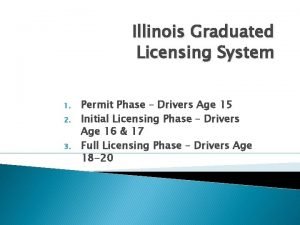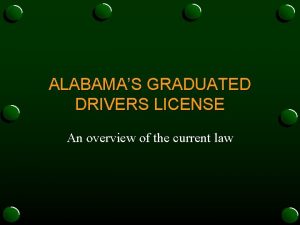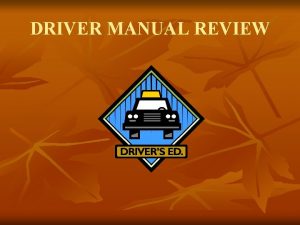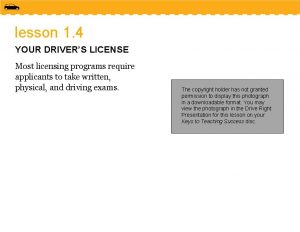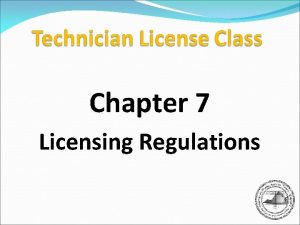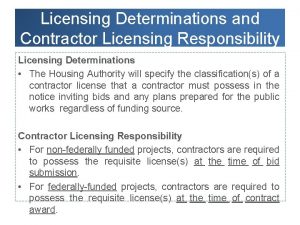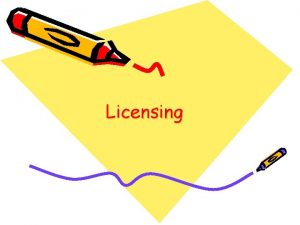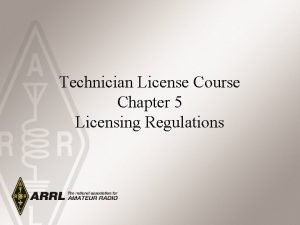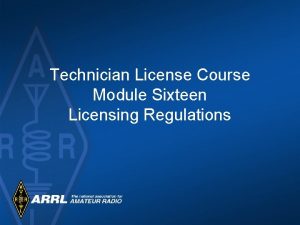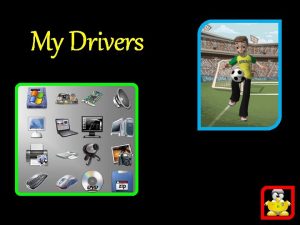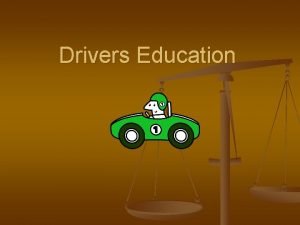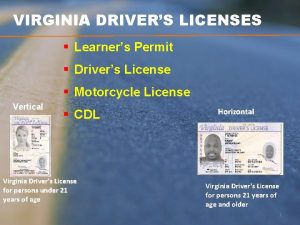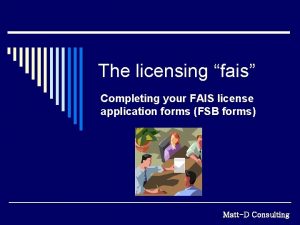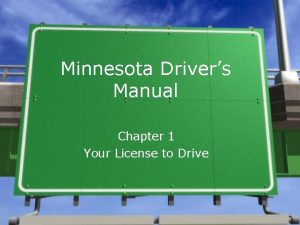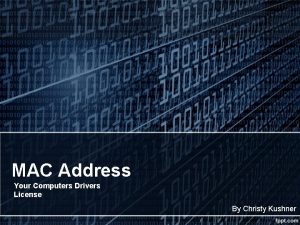lesson 1 4 YOUR DRIVERS LICENSE Most licensing


















- Slides: 18

lesson 1. 4 YOUR DRIVER’S LICENSE Most licensing programs require applicants to take written, physical, and driving exams. The copyright holder has not granted permission to display this photograph in a downloadable format. You may view the photograph in the Drive Right Presentation for this lesson on your Keys to Teaching Success disc.

OBJECTIVE Describe the stages of a graduated driver licensing program.

Graduated Driver Licensing Program (GDL) The graduated driver licensing program (GDL) requires young drivers to progress through a series of licensing stages. Typically these programs have three stages: 1. learner’s permit stage 2. intermediate license stage 3. full-privilege license stage

Graduated licensing programs have three stages. Ages and time periods vary by state.

Learner’s Permit Stage The learner receives a permit to drive when supervised by an adult, licensed driver. • The permit must be held for a minimum period— usually six months—of violation-free and collision-free driving. • Other licensed drivers, such as family members, may be asked to provide a minimum number of hours of practice driving.

Intermediate License Stage The learner must have successfully completed the learner’s permit stage and an approved driver-education course. • Supervised driving may be continued to meet the required hours. • Night driving is restricted. • Passengers can be limited in age and/or number. • The intermediate license must be held for at least six months of collision-free and violation-free driving. • Penalties for violations are increased.

Full-Privilege License Stage To qualify for a full, unrestricted license stage, the learner must • successfully complete the intermediate license stage with no violations and no collisions • in some states, complete an advanced driver-education course

OBJECTIVE Explain how a graduated driver licensing program can help you become a safer driver.

Research shows that: “…graduated licensing programs have had positive effects on the crash experience of young drivers in the United States and other countries, including Canada and New Zealand. In U. S. states that have adopted elements of graduated licensing, the safety benefits are evident. Almost all studies have found crash reductions from about 10 to 30 percent. ”

OBJECTIVE Explain the implied consent program.

Implied Consent Laws All states have enacted the implied consent law. When you get your driver’s license, you agree that if you are stopped for cause and charged with drinking and driving, you consent to having a police officer give you a test for the presence of alcohol. If you refuse to take the test, you will lose your license.

OBJECTIVE List the key concepts in a quality drivereducation program.

Driver Education and Your License Quality driver-education programs provide the opportunity to learn and practice driving skills you need to be a responsible driver.

The Drive Right driver-education program is based in part on the following key concepts: • Driving is primarily a decision-making process. You will learn how to use the IPDE Process and Zone Control to become a safe driver. • Your maturity, emotions, and attitude affect your driving. • You need to know your limits and the vehicle’s. • Drugs and alcohol will impair your ability to be a lowrisk driver.

Practice driving under a wide variety of traffic situations and road conditions, such as night driving and hazardous weather. Only then can you begin to think of yourself as an accomplished new driver.

No driving program can teach you everything you will need to know to be a safe driver. Remember, the best drivers never stop learning.

Organ Donor Program You can fill out an organ donation declaration on your driver’s license or by signing an organ donor card. The most important step in considering organ donation is discussing your decision with your family.

lesson 1. 4 review 1. Name three stages of a graduated driver licensing program and how each step is used. 2. How can a graduated driver licensing program help you become a responsible driver?
 Nj driving manual
Nj driving manual Graduated drivers license nj
Graduated drivers license nj John doe drivers license
John doe drivers license K-cdl intrastate only michigan
K-cdl intrastate only michigan Initial licensing phase
Initial licensing phase When did the initial gdl law become effective in alabama?
When did the initial gdl law become effective in alabama? Montana graduated drivers license
Montana graduated drivers license Alabama drivers manual
Alabama drivers manual What is fringe vision when driving
What is fringe vision when driving Unit 5 lesson 3 drivers ed
Unit 5 lesson 3 drivers ed Chapter 14 section 1 work and power
Chapter 14 section 1 work and power Unit 13 lesson 4
Unit 13 lesson 4 Unit 13 lesson 3
Unit 13 lesson 3 Unit 13 lesson 3 drivers ed
Unit 13 lesson 3 drivers ed Unit 7 lesson 5 review questions
Unit 7 lesson 5 review questions Family and friends 2 unit 7 lesson 2
Family and friends 2 unit 7 lesson 2 Unit 8 lesson 3 drivers ed
Unit 8 lesson 3 drivers ed The greatest source of ideas for new products is:
The greatest source of ideas for new products is: Chapter 1 lesson 1 your total health answer key
Chapter 1 lesson 1 your total health answer key

